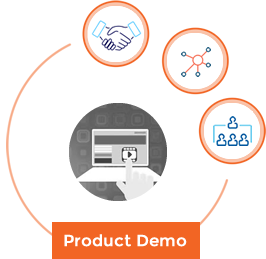Every regulated company concentrates on effective quality systems in order to maintain and overhead competition in the market, customer satisfaction, and cost control. To accomplish or sustain these success factors every company requires a proper quality management system.
CAPA:
CAPA quality system is the most essential element for a complete quality management program. Corrective actions and preventive actions help to address, rectify and eliminate all your unpredictable issues from ever happening again. A CAPA quality system is considered to be a part of ISO compliance and plays a vital role in the TQM practices of companies that want to achieve goals with zero defects.
CAPA integrated Quality management software is built to support companies fulfill the FDA guidelines by simplifying their Corrective and preventive action processes. QMS with CAPA management system is developed with an intimate understanding of five significant principles of the CAPA quality process.
5 Fundamental working principles of CAPA Quality Management System
1. Detection and Risk Analysis:
Initially, the problem should be identified by the organizations. And it should be documented as the CAPA detection phase with complete details including who, what, when, where, and how. By using these details, a risks analysis should be performed based on the compliance risk. The problems identified from the risk analysis should be mentioned with the CAPA timeline. And the problems are separated as a low- risk issues and high-risk issues which need urgency in action.
2. Investigation and Root Cause Determination:
The next step of the CAPA quality management system is performing rapid investigations and root cause analysis of these problems with several methods. The root cause determination process is encouraged by the quality management systems. It provides end-to-end traceability of the closed-loop quality processes which allows to track each and every root cause of the problems.
3. Proposed Actions:
Under this phase, the risks should be verified and validated. The immediate correction and containment required problems should be completed rapidly to avoid further disruption. Moreover, companies need to perform processes and procedures proactively to find comprehensive issues.
4. Action Implementation:
Define action plans based on the problem’s riskiness. A CAPA quality process gives long-term corrective and preventive actions to rectify and eliminate the cause of compliance risk. A corrective action removes the cause of nonconformity issues whereas the preventive action eliminates the cause of potential nonconformity issues.
5. Effectiveness Review:
The final phase of the CAPA quality process is conducting reviews on corrective and preventive action’s effectiveness. After completing CAPA investigations evaluate whether the nonconformity problem cause is resolved. And also check for any inconsistency occurrence created in new areas.
Unfortunately, if a company fails to maintain quality management issues, will face an instant and significant impact on their business success. If companies neglect the CAPA quality process and identify the root cause of compliance problems, it pushes them to experience problem recurrence at unexceptional costs. As a result, ineffective complaint handling will lead to brand reputation and breakdown in customer relationships. This shows the necessity of a quality management system for every company.
Aura the web-based Quality management solutions provider helps your organizations to define a strong baseline for effective CAPA, supply chain management, and complaint handling. To get more information on our Automated QMS solutions request a demo or reach us on the website.





